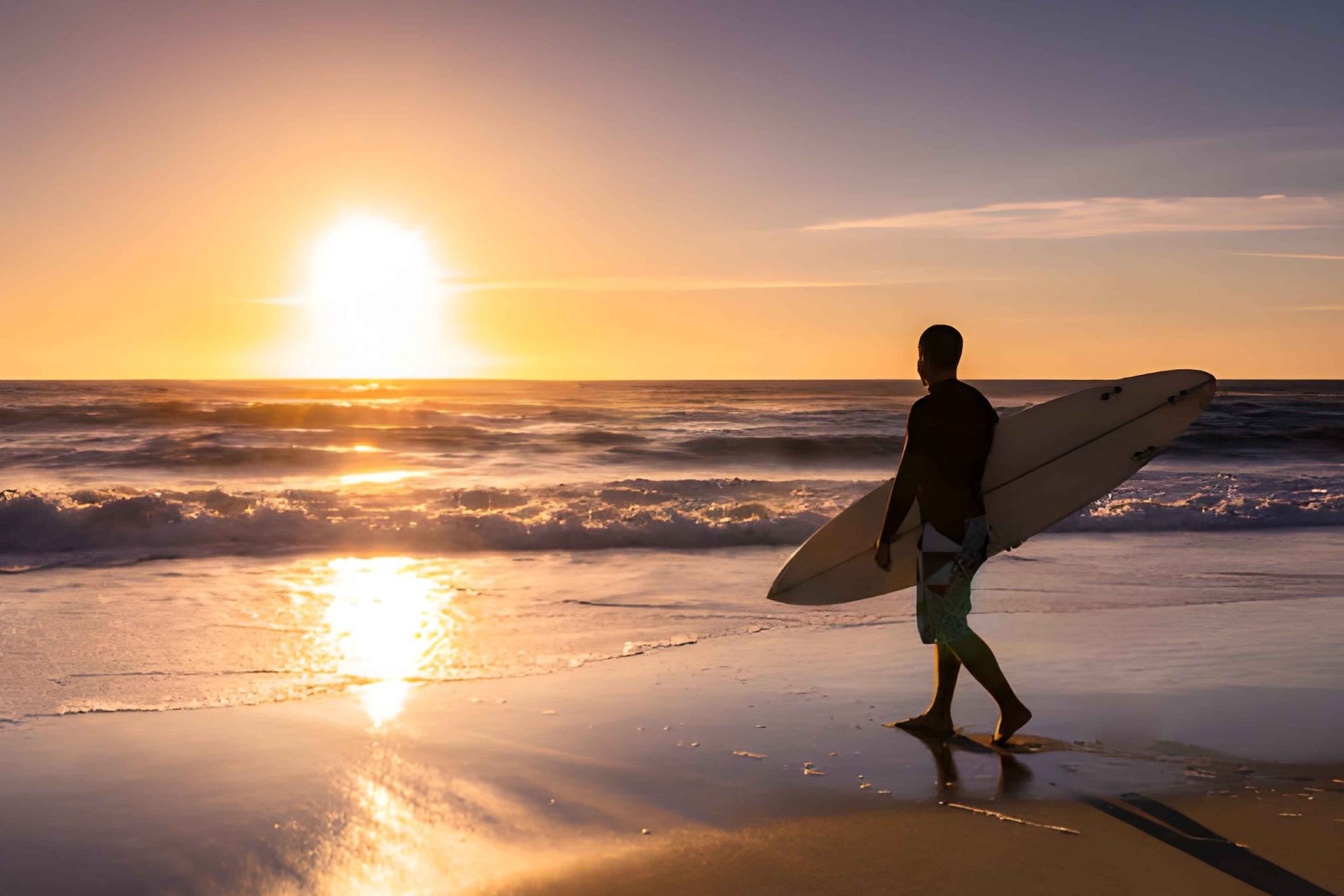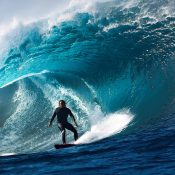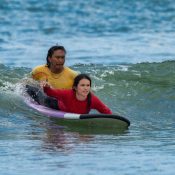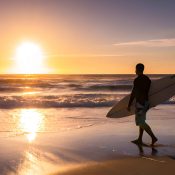How to Progress in Surfing: Landlocked Training Guide

How to Progress in Surfing: Landlocked Training Guide
Landlocked Training Guide – You've caught the surfing bug, but there's one problem: the nearest ocean is hundreds or thousands of miles away. Does this mean your surfing dreams are on hold until your next vacation? Absolutely not!
Many of the world's best surfers spent their formative years training far from the coast. The secret isn't constant ocean access—it's targeted, intelligent training that builds the specific muscles, skills, and muscle memory you need for surfing.
This comprehensive guide will show you exactly How to Progress in Surfing: Landlocked Training Guide no matter where you live. From dry-land drills to technology solutions, we'll help you return to the ocean better than when you left.
1. The Landlocked Surfer's Mindset
Progress Isn't Just About Wave Count
Many coastal surfers plateau because they “just surf” without intentional practice. As a landlocked surfer, you have the advantage of focused training:
- Quality over quantity: Every movement can be deliberate and correct
- No bad habits: You're not reinforcing poor technique in the water
- Building foundations: Strong fundamentals transfer directly to wave riding
- Mental preparation: Visualization builds neural pathways
What You CAN Control Away from the Ocean
- Strength and conditioning
- Flexibility and mobility
- Balance and coordination
- Surf-specific movements
- Ocean knowledge and theory
- Mental visualization
2. Essential Landlocked Training Equipment
Building Your Home Surf Gym
You don't need expensive equipment to make significant progress:
Must-Have Equipment
- Balance board: The single most important landlocked surf tool
- Yoga mat: For flexibility and core work
- Resistance bands: For paddling strength and rotational power
- Stability ball: For core strength and balance
- Skateboard: For carving sensations and balance
Nice-to-Have Upgrades
- Indo Board: The original balance trainer
- Swim harness: For paddling-specific resistance training
- Video setup: For analyzing your form
- Virtual reality: For wave reading practice
Budget-Friendly Alternatives
| Equipment | Professional Version | Budget Alternative |
|---|---|---|
| Balance Board | Indo Board ($120+) | DIY wooden board + PVC pipe ($20) |
| Swim Training | Endless pool ($thousands) | Resistance bands + bench ($40) |
| Video Analysis | Professional camera | Smartphone + tripod ($10) |
| Skateboard | Carver surf skate ($200+) | Regular skateboard + softer wheels ($60) |
3. The 5 Pillars of Landlocked Surf Training
1. Pop-Up Perfection
The pop-up is the most crucial movement in surfing—and it's 100% trainable on land.
Progressive Pop-Up Drills
- Slow-motion pop-ups: Focus on perfect hand placement and foot positioning
- Eyes-up practice: Always look forward, never at your feet
- Uneven surface pop-ups: On a balance board or pillows to simulate wave motion
- Fatigue pop-ups: Do 10-20 in a row to build endurance
Goal: Muscle memory so strong you pop up perfectly without thinking.
2. Paddling Power Development
Paddling fitness separates good surfers from great ones.
Land-Based Paddling Exercises
- Swimming: The obvious but most effective choice
- Resistance band paddling: Mimics the exact movement
- Plank variations: Builds shoulder and core endurance
- Pull-ups and lat pulldowns: Builds the key paddling muscles
Training Schedule: 3x weekly paddling-focused workouts.
3. Balance & Stability Training
Surfing is essentially continuous balance recovery.
Balance Progression Plan
- Week 1-4: Basic balance board standing (2 minutes)
- Week 5-8: Balance board squats and rotations
- Week 9-12: Balance board pop-ups
- Week 13+: Balance board with eyes closed or while catching a ball
4. Surf-Specific Strength
Build strength that directly translates to wave riding.
The Surfer's Strength Circuit
- Rotational medicine ball throws: For powerful turns
- Single-leg deadlifts: For stability during bottom turns
- Burpees: For pop-up explosiveness
- Landmine rotations: For generating torque
5. Flexibility & Injury Prevention
Stiff surfers get injured and can't perform.
Daily Mobility Routine
- Hip openers: For better stance and rotation
- Shoulder mobility: For paddling and duck diving
- Spinal twists: For looking down the line
- Dynamic stretching: Before all training sessions
Read also: Video Analysis Surfing: How It Supercharges Your Progress
4. Technology Solutions for Landlocked Surfers
Virtual & Augmented Reality Training
The landscape is evolving rapidly for landlocked surf training:
| Technology | What It Offers | Current Limitations |
|---|---|---|
| VR Surfing | Wave reading practice, balance challenges | Doesn't replicate water feel |
| Surf Skate Simulators | Realistic carving sensations | Limited to flat ground |
| Video Analysis Apps | Form correction through self-review | Requires existing technique knowledge |
| Online Coaching | Professional feedback on land training | Time zone challenges possible |
Creating Your Feedback Loop
- Film everything: Use your phone to record balance board sessions and pop-ups
- Compare to pros: Screen-grab professional surfers and match their positions
- Use apps: Tools like Coach's Eye allow frame-by-frame analysis
- Join online communities: Get form checks from experienced surfers
5. Creating Your Landlocked Training Schedule
Sample Weekly Training Plan
| Day | Focus | Workout |
|---|---|---|
| Monday | Strength & Power | Strength circuit + pop-up practice |
| Tuesday | Paddling Endurance | Swimming or band work + flexibility |
| Wednesday | Balance & Skills | Balance board progression + skate session |
| Thursday | Active Recovery | Yoga or light mobility work |
| Friday | Power & Simulation | Strength circuit + video analysis |
| Saturday | Endurance | Long skate session or swim |
| Sunday | Rest | Mental visualization only |
Periodization for Surf Trips
- 12 weeks out: Focus on base fitness and technique
- 8 weeks out: Increase intensity and sport-specific work
- 4 weeks out: Peak performance training
- 2 weeks out: Taper and mental preparation
- Trip week: Light maintenance and visualization
6. Mental Training & Knowledge Development
What You Can Learn Without Water
- Wave theory: Understand how swells create surfable waves
- Tide and weather knowledge: Learn how conditions affect different breaks
- Surf etiquette: Study lineup rules and safety protocols
- Equipment knowledge: Understand how different boards work
Visualization Techniques
- Watch professional surfers: Analyze their technique and imagine yourself making the same movements
- Mental rehearsal: Visualize entire surf sessions from paddle out to final wave
- Fear management: Imagine challenging situations and practice staying calm
- Goal visualization: See yourself successfully performing new maneuvers
Read also: Surf Levels: How to Understand Where You Are with Your Surfing
7. FAQ: Landlocked Training Guide
You can dramatically improve your fitness, pop-up technique, balance, and knowledge. The first session back in the ocean will still require adjustment, but you'll progress much faster than someone who did no training.
A balance board. It directly trains the stabilizer muscles and movements used in surfing.
4-5 focused sessions per week of 45-60 minutes will produce significant results within 8-12 weeks.
You can build an excellent foundation, but nothing replaces time in the ocean. Aim for 80% preparation on land, 20% refinement in water.
In the 2 weeks before your trip, focus on paddling endurance, pop-up crispness, and flexibility. Reduce heavy strength training.
Absolutely. Carver-style surf skates provide the closest land-based feeling to actual surfing and dramatically improve your balance and carving ability.
Set specific, measurable goals (e.g., “hold a handstand for 30 seconds,” “do 50 perfect pop-ups”), track your progress, and connect with other landlocked surfers online.
Conclusion: Your Next Ocean Session Will Prove It
Being landlocked isn't a surfing limitation—it's an opportunity to build foundations that many ocean-accessible surfers neglect. When you do return to the water, you'll be amazed at how your land-based training translates to real wave riding.
Remember that every great surfer spends most of their life out of the water. What separates exceptional surfers isn't wave count—it's how they use their time between sessions.
The techniques in this guide have helped Sōleïa students from Landlocked Training Guide areas show up to camp already miles ahead. Your dedication to training away from the ocean demonstrates a commitment that will serve you perfectly when you're finally riding waves again.
Recent Posts
ISA Level 1 Surf Instructor: Complete Guide to Requirements & Skills
Surf Holidays Packages in Bali Compared (Price, Inclusions & Reviews)
How to Progress in Surfing: Landlocked Training Guide
Start From € 5125,-
Our 12-weeks
Surf Academy Program in Bali





